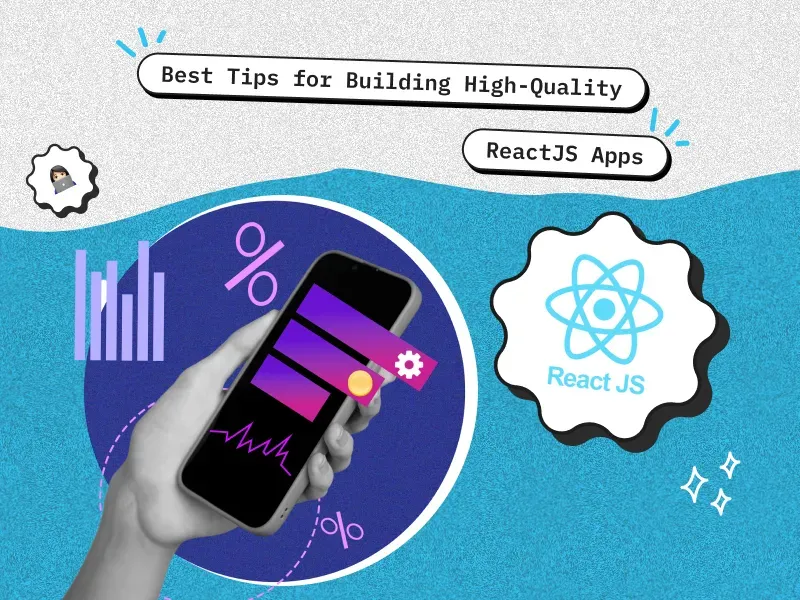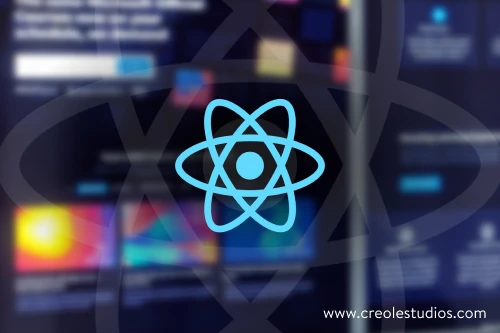Quick Summary
React is a popular tool for building websites and apps, used by companies like Airbnb, Netflix, and Instagram. However, just using React doesn’t guarantee a great app. By following simple best practices, businesses can ensure their apps are fast, easy to use, and work well on different devices.
This article explains how to build high-quality ReactJS apps in a way that’s easy to understand, even if you’re not a developer.
Introduction
ReactJS is a tool that helps create modern websites and apps. It makes it easier to build interactive user interfaces. But if React is not used correctly, apps can become slow, difficult to manage, and frustrating for users. In this article, we’ll explore simple best practices that can help ensure a smooth experience for both businesses and users.
If you’re looking to build a high-quality React app, it’s essential to hire ReactJS developers with the right expertise.
React Best Tips for Building Better ReactJS Apps
If you’ve ever used a web app that loads fast, looks great, and works smoothly, chances are it was built using ReactJS. React is a popular technology used to create modern websites and Top ReactJS apps. But what makes some React apps better than others? It’s all about following best practices!
1. Keep Things Organized
Imagine if your phone didn’t have folders for apps or if your documents were scattered everywhere. It would be a mess, right? The same goes for building a React app.
What developers do:
- They structure their code in an organized way so that everything is easy to find.
- They keep different parts of the app separate, like how a kitchen has different drawers for forks, spoons, and knives.
- This makes future updates and improvements much easier.
2. Build Reusable Parts (Like LEGO Bricks)
Think about how LEGO bricks work—you can build a house, a car, or even a spaceship using the same small pieces.
React works the same way. Instead of creating everything from scratch, developers build small reusable components (like buttons, menus, and forms) that can be used multiple times in different parts of the app.
Why this is helpful:
- It saves time and effort.
- If something needs fixing, they only have to update it once.
- It keeps the app design consistent and easy to manage.
3. Make the App Fast and Smooth
Nobody likes slow websites or apps. Great ReactJS apps should load quickly and respond instantly when you click something.
How developers do this:
- They avoid unnecessary work—just like how you don’t reheat a whole pizza if you only want one slice.
- They use smart techniques to ensure only the parts that need updating get refreshed.
- They load images, videos, and heavy content only when needed (like how Netflix loads episodes one by one instead of all at once).
4. Keep Things Simple and Clear
Imagine using a remote control with 50 buttons but only needing five. Confusing, right?
The best React apps focus on simplicity and ease of use.
What developers do:
- They design clean, easy-to-understand interfaces.
- They remove unnecessary steps for users (e.g., fewer clicks to complete a task).
- They test apps to make sure everything feels natural and intuitive.
5. Handle Data Smartly
Apps often deal with a lot of data—like user information, messages, or product details. But managing all that information efficiently is crucial.
How developers make it work smoothly:
- They keep important data stored in a way that’s easy to access when needed.
- They avoid repeating data in different places to prevent confusion.
- They use smart tools to handle large amounts of information without slowing the app down.
6. Ensure a Great User Experience for Everyone
A good ReactJS apps should be accessible to all users, including those with disabilities.
What developers focus on:
- Making sure buttons, text, and navigation are easy to see and use.
- Allowing people to interact with the app using only a keyboard if needed.
- Following web accessibility standards so that people with disabilities can use the app comfortably.
7. Keep Everything Secure
Just like you wouldn’t share your passwords with strangers, ReactJS apps must protect user information.
What developers do:
- They hide sensitive information like passwords and payment details.
- They make sure data is encrypted (like how WhatsApp messages are secured).
- They regularly update the app to fix any security risks.
8. Test Before Launching
Before a new car is sold, it goes through multiple safety and quality checks. The same applies to React apps.
Why testing is important:
- It helps catch small mistakes before users find them.
- It ensures the app works smoothly on different devices (phones, tablets, computers).
- It prevents crashes, bugs, and unexpected problems.
9. Keep Updating and Improving
Technology is always evolving, and a great React app never stays the same.
What developers do:
- They keep the app updated with the latest features and security patches.
- They listen to user feedback and make improvements over time.
- They remove outdated or unnecessary features to keep things fresh.
Conclusion
By implementing best practices, you can build high-quality ReactJS apps that perform well and scale effectively. Following these guidelines not only enhances user experience but also makes development more manageable in the long run. Whether you’re building from scratch or optimizing an existing project, having the right expertise is crucial.
If you need professional assistance, you can always hire ReactJS developers to ensure your application is built with efficiency, scalability, and best industry standards in mind.
FAQs
1. How do I optimize my React.js application?
Ans: Use React.memo, lazy loading, and virtualization to improve performance. Optimize state management with Redux or Zustand, minimize re-renders with useCallback/useMemo, and reduce bundle size with code splitting.
2. Why should you choose ReactJS for your next project?
Ans: Choosing ReactJS offers fast rendering, reusable components, and a strong ecosystem, making it ideal for scalable and high-performance applications.
3. How to improve code quality in React?
Ans: Use TypeScript, ESLint/Prettier, and follow a modular component structure. Write reusable, maintainable code, use PropTypes or interfaces, and ensure reliability with Jest or React Testing Library.
4. Svelte vs ReactJS: Which is the better choice in 2025?
Ans: Svelte vs ReactJS comes down to project needs—ReactJS is better for large-scale apps with strong community support, while Svelte offers better performance and simplicity for smaller projects.
4. What are the best state management practices in React?
Ans: Use React Context API, Redux, or Zustand based on the complexity of your app. Keep state minimal, avoid unnecessary re-renders, and prefer local state over global state when possible.
5. What is the latest version of React?
Ans: As of March 2025, the latest stable version is React 19.0.0, released on December 5, 2024. It includes new features and performance improvements.
6. React vs Angular: Which Framework is Better?
Ans: Both React vs Angular have their strengths. React is best for building highly interactive UIs with flexibility, while Angular is a complete framework with built-in tools for large-scale applications.
4. How should I structure a React project for maintainability?
Ans: Follow a modular folder structure, separate components, hooks, and utilities, use absolute imports, and organize files based on features or domains to improve scalability.
5. What are the best testing strategies for a React app?
Ans: Use Jest & React Testing Library for unit tests, Cypress or Playwright for end-to-end tests, and ensure components are tested in isolation to catch regressions early.











 30 mins free Consulting
30 mins free Consulting 
 10 min read
10 min read 







 Love we get from the world
Love we get from the world 